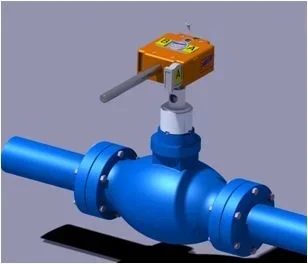Valve interlock: Understand the workflow for safe operation

Valve interlock is an important part of industrial safety. They are designed to prevent accidents by ensuring that valves open and close in the correct sequence. In this article, we will explore the workflow of valve interlocks and how they ensure safe operation in industrial environments.
What is a valve interlock?
A valve interlock is a mechanical device that ensures valves operate in the correct sequence. The system is designed to prevent accidents by ensuring valves open and close in the correct sequence. Valve interlock devices are commonly used in the oil and gas industry, chemical plants, and other industrial environments where valve failure can lead to catastrophic accidents.
Valve interlock devices typically consist of a series of mechanical components designed to prevent disordered valve operation. The system may include other components such as interlock keys, interlocking devices, and connectors that work together to ensure that the valves operate in the correct sequence.

Valve interlock workflow:
The workflow of valve interlock can be divided into several steps. These steps are designed to ensure that the valves are operating in the correct sequence and the system is functioning properly.
Step 1: Valve Identification
The first step in the valve interlock workflow is to identify the valve. This is usually done by using a key or other tool to identify the valve. This key is usually unique to the valve and is used to ensure proper valve operation.
Step 2: Unlock the valve
Once the valve is identified, the next step is to unlock the valve. This is usually done by inserting a key into the interlocking system and operating the key to unlock the valve. This step ensures that the valve is operable.
Step 3: Operate the valve
The next step in the valve interlock workflow is to operate the valve. This is usually done by turning a handle or using a handwheel to open or close the valve. The interlocking system ensures that the valves operate in the correct sequence.
Step 4: Lock the valve
After operating the valve, the next step is to lock the valve. This is usually done by operating a key in an interlocking system to lock the valve. This step ensures that the valves do not operate out of sequence.
Step 5: Verify valve position
The final step in the valve interlock workflow is to verify valve position. Complete the sequential operation of a group of valves according to the specified logic, otherwise, the system operation will not be successful. This step ensures that the valve is operating correctly and the system is functioning properly.
Valve interlock is critical to ensuring safe operation in industrial environments. They prevent accidents by ensuring that valves open and close in the correct sequence. This helps prevent catastrophic events and protects workers and equipment.
Valve interlock is also important to prevent equipment damage. For example, if a pump is shut down without first closing the valve, the pump may continue to run and cause damage to the equipment. The valve interlock device prevents this from happening by ensuring that the valve closes before the pump shuts off.
Valve interlock is an important part of industrial safety. They ensure safe operation by ensuring that valves open and close in the correct sequence. The workflow of valve interlock can be divided into several steps, including valve identification, valve unlocking, valve operation, valve locking, and valve position verification. By understanding the workflow of valve interlocks, we can ensure they continue to play a critical role in industrial safety.
https://www.nudango.com/Valve-interlock-Understand-the-workflow-for-safe-operation.html
- Art
- Causes
- Crafts
- Dance
- Drinks
- Film
- Fitness
- Food
- Games
- Gardening
- Health
- Home
- Literature
- Music
- Networking
- Other
- Party
- Religion
- Shopping
- Sports
- Theater
- Wellness


